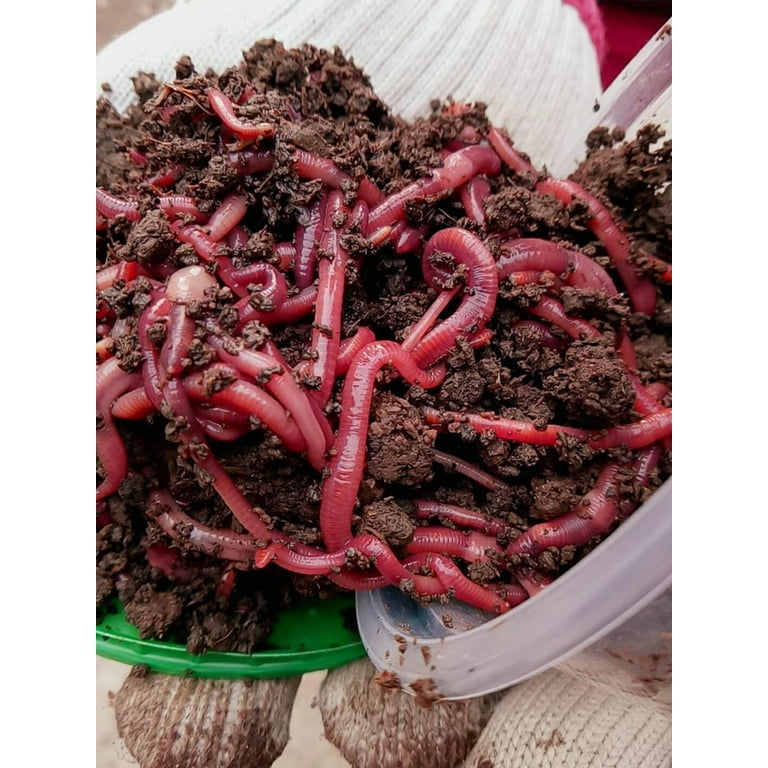Discovering the Mechanisms of Red Wiggler Composting: A Comprehensive Overview to the Refine and Its Positive Influence on Sustainable Gardening Practices
The detailed systems of red wiggler composting, making use of the distinct physiology of Eisenia fetida, present a compelling opportunity for boosting sustainable gardening methods. As city gardening gains traction, recognizing the nuances of this composting approach comes to be increasingly relevant.
Comprehending Red Wigglers
Red wigglers, scientifically understood as Eisenia fetida, are a varieties of earthworm highly concerned for their effectiveness in composting organic waste. These worms flourish in nutrient-rich atmospheres, specifically in decaying organic issue, making them optimal for vermicomposting systems - Red Wiggler Composting. Identified by their reddish-brown pigmentation and fractional bodies, red wigglers are smaller sized than usual earthworms, typically determining in between 3 to four inches in length
Their distinct physical qualities improve their composting abilities; as an example, they have a high reproductive rate, allowing populaces to multiply swiftly under suitable conditions. Red wigglers consume organic material, damaging it down via their gastrointestinal systems, which results in nutrient-rich castings that function as an excellent natural fertilizer. Their voracious cravings allows them to process large quantities of food waste successfully, substantially lowering land fill contributions.
Along with their composting prowess, red wigglers play an important duty in dirt health. Red Wiggler Composting. They aerate the dirt and assist in the decay of natural issue, more enriching the dirt ecological community. Recognizing the features and ecological benefits of red wigglers is necessary for anyone looking to execute sustainable horticulture techniques through efficient composting methods
The Composting Process
The composting process entails damaging down organic products into nutrient-rich garden compost, a job that red wigglers stand out at because of their specialized digestion systems. These worms consume food scraps, lawn waste, and other raw material, changing them right into valuable compost with a series of chemical and organic processes.
Initially, the natural matter is combined with bed linens products such as shredded paper or dried leaves, creating an ideal environment for the worms. As the red wigglers ingest this blend, they break it down through their intestine, where microbes even more decompose the material. This procedure generates heat, promoting microbial activity, which speeds up disintegration.

Benefits of Red Wiggler Composting
Several garden enthusiasts and eco-conscious individuals recognize the countless benefits of red wiggler composting, making it a popular option for effective waste management. One of the key advantages is its capacity to dramatically decrease natural waste in garbage dumps - Red Wiggler Composting. Red wigglers efficiently damage down kitchen area scraps and other naturally degradable materials, changing them into nutrient-rich vermicompost that improves dirt health and wellness
Additionally, red wiggler composting improves soil framework and fertility. The resulting vermicompost is brimming with valuable microorganisms, which promote plant growth and enhance nutrient retention. This all-natural fertilizer not just supports sustainable horticulture techniques yet likewise lowers dependence on chemical fertilizers, cultivating a much healthier ecosystem.
Furthermore, red wiggler composting is a space-efficient approach, making it excellent for metropolitan garden enthusiasts with limited area. The procedure can be carried out inside your home or outdoors, enabling year-round composting despite climate conditions. Additionally, red wigglers are low-maintenance organisms look at this site that need very little treatment, making them accessible for novice gardeners.
Essentially, the benefits of red wiggler composting expand past waste reduction; they contribute to healthier soils, lasting horticulture practices, and ecological stewardship, positioning it as an important technique in modern-day cultivation.
Finest Practices for Composting
For successful red wiggler composting, sticking to best techniques is important to take full advantage of efficiency and make certain an efficient atmosphere for these worms. This equilibrium advertises optimal disintegration and boosts the worms' health and wellness.
Following, monitor dampness degrees, intending for a moist, sponge-like consistency. Excessively damp conditions can cause anaerobic disintegration, while excessive dry skin might hinder worm activity. Furthermore, make website link certain appropriate aeration by turning the garden compost consistently, which helps protect against compaction and enables appropriate oxygen flow.
Temperature level is an additional important factor. Maintain a variety of 55 ° F to 77 ° F(13 ° C to 25 ° C) to advertise worm task and microbial growth. Lastly, prevent presenting meat, dairy, and oily foods, as these can attract parasites and create odors.
Enhancing Sustainable Horticulture
Lasting gardening personifies an all natural technique that integrates ecological principles with functional horticulture techniques. By incorporating approaches such as red wiggler composting, gardeners can dramatically boost their practices, fostering a more durable community. Red wigglers, renowned for their efficient decomposition abilities, convert natural waste right into nutrient-rich compost, therefore improving the dirt without depending on chemical plant foods.
Implementing sustainable gardening techniques, such as plant turning, friend growing, and mulching, additional enhances the benefits of composting. These techniques not only enhance dirt structure and fertility yet additionally advertise biodiversity, bring in valuable bugs and organisms that add to plant wellness. Moreover, utilizing native plants can lower water intake and reduce upkeep, lining up with water preservation initiatives.

Verdict
In conclusion, red wiggler composting represents a crucial approach for enhancing sustainable gardening practices. The efficient digestion of organic waste by Eisenia fetida not just produces nutrient-rich vermicompost but likewise promotes enhanced dirt health and framework. By advertising cardio decomposition, this technique lessens odors and waste while lowering dependency on chemical plant foods. Eventually, the adoption of red wiggler composting can considerably contribute to environmentally friendly horticulture, profiting both urban and beginner garden enthusiasts in their farming initiatives.
The detailed mechanisms of red wiggler composting, utilizing the one-of-a-kind physiology of Eisenia fetida, provide a compelling opportunity for enhancing sustainable horticulture techniques. Understanding the qualities and ecological benefits of red wigglers is crucial for anyone looking to execute sustainable horticulture techniques with effective composting techniques.

In conclusion, red wiggler composting stands for a vital approach for boosting sustainable horticulture practices. Ultimately, the fostering of red wiggler composting can substantially contribute to environmentally friendly horticulture, benefitting both city and novice garden enthusiasts in their cultivation efforts.